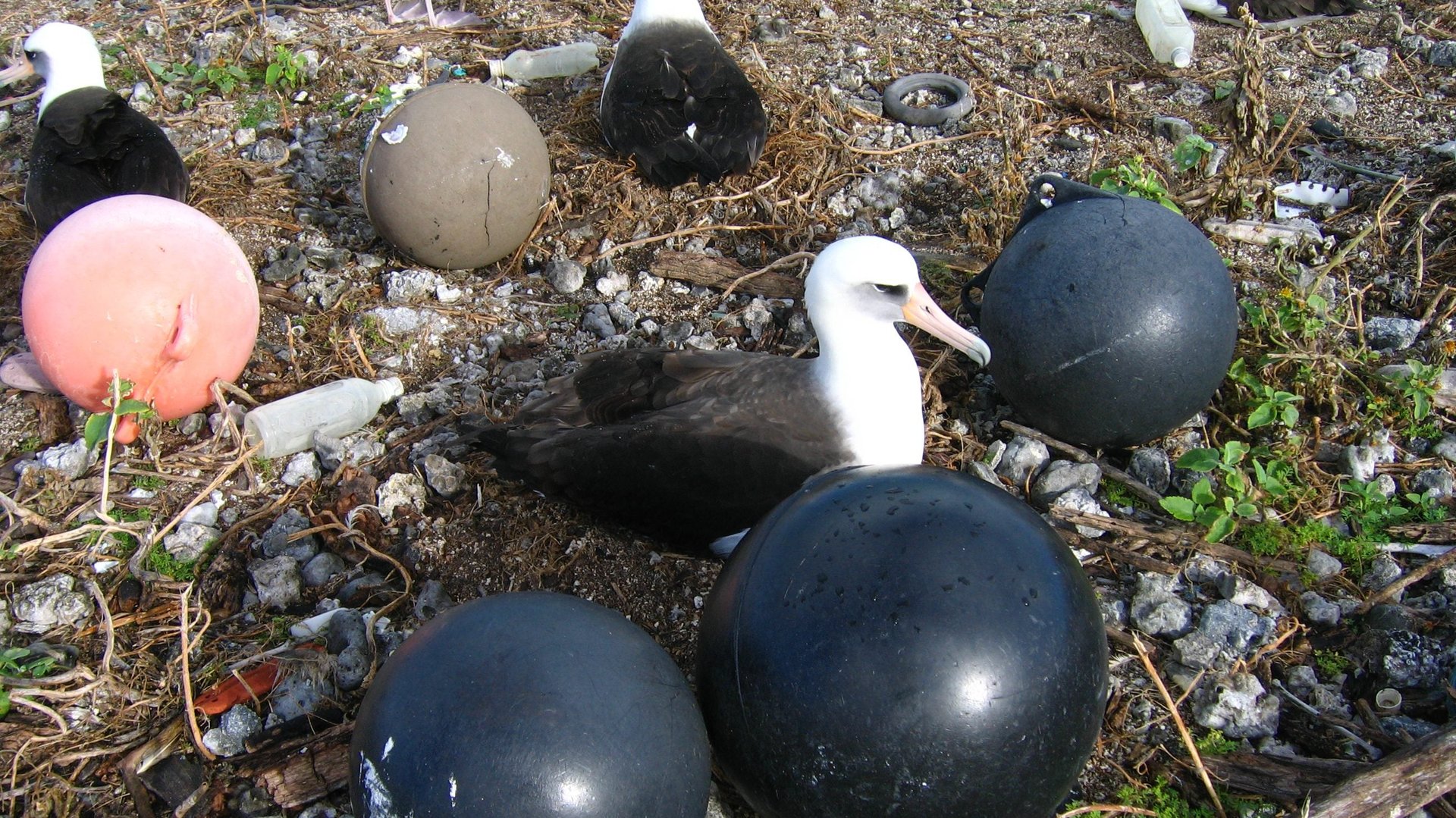Nearly all seabirds will have plastic in their stomachs by 2050
Sea creatures can’t catch a break from our dependence on plastics. Now researchers estimate that in less than four decades, 99% of seabirds will have traces of plastic in their digestive tacts.


Sea creatures can’t catch a break from our dependence on plastics. Now researchers estimate that in less than four decades, 99% of seabirds will have traces of plastic in their digestive tacts.
In a study published yesterday (Aug. 31) by Australia’s Commonwealth Scientific and Industrial Research Organisation in the Proceedings of the National Academy of Sciences, researchers show results from a risk model built to assess plastic levels in seabirds. Based on data collected from 1962 to 2012, and adjusted for time and other bird species, the team estimates that 90% of the world’s birds already have plastic in their guts.
If current plastic production and waste management levels continue, it will get much worse.
Study author Chris Wilcox told Quartz: “I was aware that there were some species like albatross with pretty high ingestion rates. What was surprising was the proportion.” But that tracks with the worldwide production of plastic, which he says doubles every 11 years. “That means,” said Wilcox, “that between now and 2026 we will make as much plastic as we’ve made since it’s been around.” As a result, more and more species will be exposed to plastic in their diets.
This doesn’t bode well for the rest of the ocean. “Seabirds are a pretty good indicator of the state of the environment,” says Wilcox. “They cover large distances, are relatively sensitive to changes in the environment, and are at the top of the marine food chain. Any sort of pollutants or disturbances are magnified up through the chain.”
Image by David Patte/U.S. Fish and Wildlife Service on Flickr, licensed under CC BY 2.0.